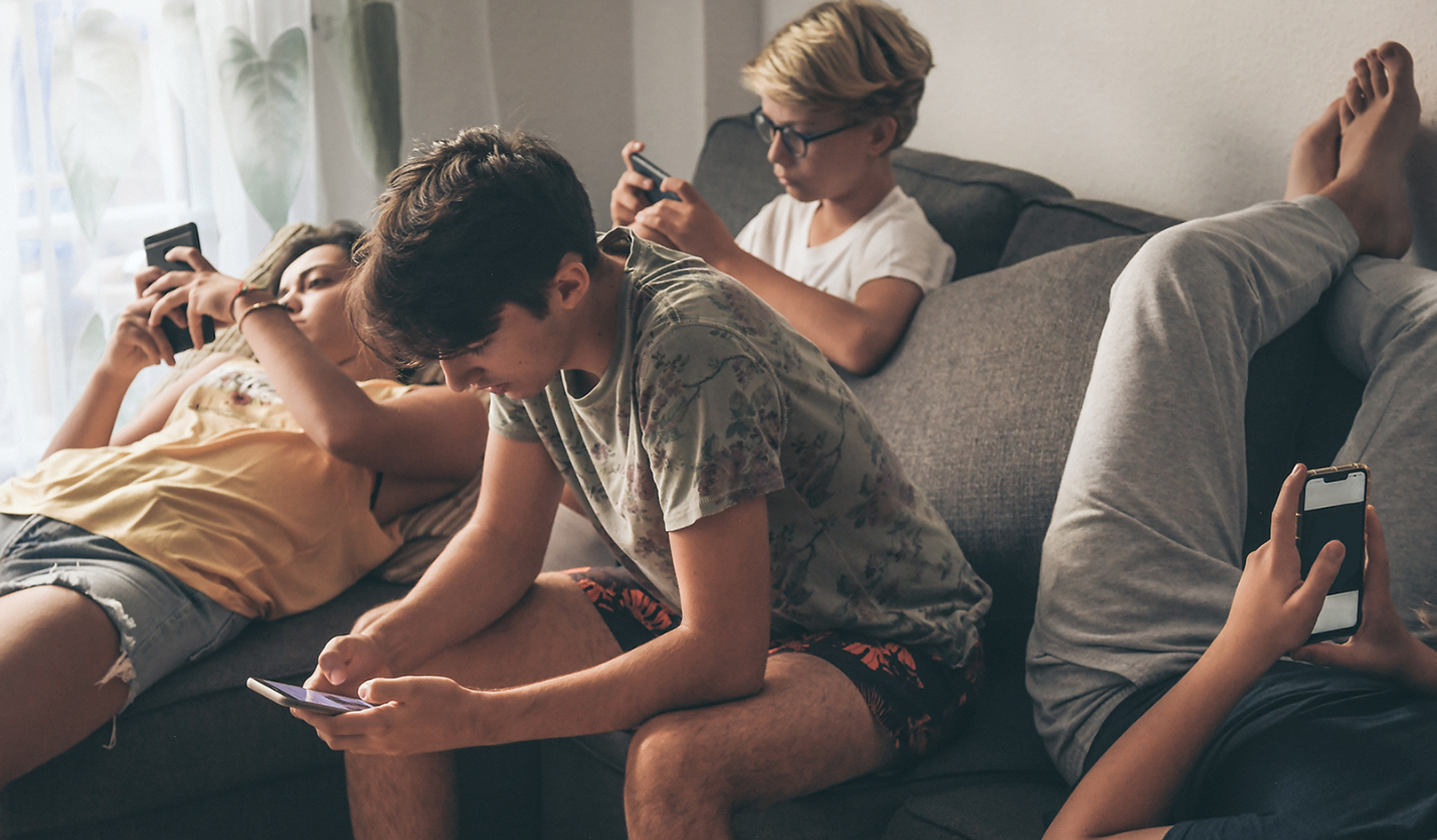The impact of technology on our relationships has been significant in recent years. With the rise of social media and other digital platforms, it has become easier than ever to connect with others and stay in touch. However, at the same time, the constant use of technology can lead to a lack of meaningful face-to-face interactions and a sense of disconnection from the world around us. In this blog, we will explore the various ways in which technology has impacted our relationships, and offer suggestions for how to balance screen time with real-life interactions.
- Altered Communication Habits:
One of the most significant impacts of technology on our relationships is the way in which it has changed our communication habits. While social media and messaging apps have made it easier to stay in touch with people, they have also made it more difficult to have meaningful conversations. Rather than talking face-to-face or over the phone, many people now communicate through short messages or comments on social media. This can lead to a lack of depth in our conversations and a sense of disconnection from those around us.
- Misinterpretation of Emotions:
Furthermore, communication via digital platforms can often lead to a misinterpretation of emotions and tone, as the lack of physical cues can make it harder to discern the intention behind a message. The use of emojis and GIFs has been a way to try and add some emotion to our digital messages, but it still cannot replace the richness of a real-life conversation. This has been a cause of concern for some as it can lead to misunderstandings and conflict.
- Altered Relationships:
Another impact of technology on our relationships is the way in which it has changed the way we form and maintain connections. While it is easier than ever to find people with similar interests online, this can also lead to a sense of isolation and loneliness. Many people now spend more time interacting with others online than they do in person, leading to a lack of real-life connections.
Read More: How Has Technology Transformed Education In Pakistan? – About Pakistan
- Altered Time Management:
In addition to changing the way we communicate and form relationships, technology has also impacted the way we spend our time. Many people now spend hours each day scrolling through social media feeds or watching videos online. While this can be entertaining, it can also lead to a lack of productivity and a sense of disconnection from the world around us.
- Create Virtual Connections:
Moreover, social media has allowed people to create and maintain virtual relationships with people they have never met in real life, leading to a change in the concept of relationships. While some argue that virtual relationships are just as valid as real-life ones, others claim that the lack of physical presence and shared experiences makes them less meaningful. Furthermore, the availability of social media has allowed people to be in contact with a larger number of people, but this can also lead to a decrease in the quality of the relationships, as people are not able to maintain meaningful connections with so many people at once.
This can lead to a sense of FOMO (fear of missing out) and the constant need to check one’s phone or device, leading to a lack of focus and productivity in real-life interactions. Furthermore, the reliance on technology has led to the decrease in the time spent on outdoor activities, reading, or engaging in hobbies, leading to a decrease in the quality of life.
- Altering Perceptions:
Another aspect of the impact of technology on our relationships is the way in which it has changed the way we perceive ourselves and others. With the constant exposure to images and stories on social media, people can develop unrealistic expectations of themselves and others. This can lead to feelings of inadequacy and low self-esteem, leading to the breakdown of relationships. The availability of information online has led to a change in the way we perceive others, as people can often present themselves in a way that is not reflective of who they truly are. This can lead to a lack of trust and an inability to form meaningful connections.
Finally, the impact of technology on our relationships can also be seen in the way it has changed the way we express ourselves. Therefore, it must be addressed.
So, how can we balance screen time with real-life interactions?
In today’s digital age, balancing screen time with real-life interactions has become increasingly important for maintaining healthy relationships and overall well-being. While technology has brought many benefits, it can also lead to a lack of meaningful connections and a disconnection from the world around us. In this blog, we will explore various ways in which we can balance screen time with real-life interactions.
Make Social Connections instead of Virtual Connections:
Another strategy for balancing screen time with real-life interactions is to make a conscious effort to connect with others in person. This can be done by scheduling regular social activities with friends and family, such as going out for dinner or attending a local event. By trying to spend time with others in person, we can strengthen our relationships and build a sense of community.
It is also important to be mindful of the way we use technology in our interactions with others. Rather than relying solely on social media or messaging apps to communicate, we should try to have more meaningful conversations with those around us. This can be done by setting aside time to talk with friends or family, or by participating in group activities that encourage conversation and interaction.
Awareness about Negative Impacts of Technology:
Finally, we should also be aware of the potential negative impacts of technology on our relationships, and take steps to mitigate them. This can include setting boundaries around our use of devices, such as avoiding the use of devices during meals or social gatherings, and trying to be fully present in our interactions with others.
Set Boundaries Around Screen Time:
Firstly, it is important to set boundaries around our screen time. This can include limiting the amount of time we spend on social media or other digital platforms and setting designated times for checking emails or messages. We can also turn off notifications on our devices to reduce the constant distraction and temptation to check our screens.
Replace Screen Time with Physical Activities:
Moreover, we can replace some of our screen time with activities that involve face-to-face interactions. This can include participating in group activities such as sports or clubs, attending social events or gatherings, or volunteering in the community. These activities allow us to connect with others in a meaningful way and develop new relationships outside of our digital networks.
Prioritize Time with Loved Ones:
Additionally, it is important to prioritize spending quality time with our loved ones. This can include scheduling regular date nights with a partner or carving out time for family activities. By focusing on building and maintaining strong relationships with those closest to us, we can create a support network that provides us with a sense of connection and fulfillment.
Furthermore, it is important to try to connect with people in person rather than relying solely on digital communication. This can involve meeting up with friends for coffee or a meal, having phone or video calls instead of messaging, or sending handwritten letters or cards. By prioritizing face-to-face interactions, we can strengthen our relationships and build deeper connections with others.
Make Conscious Choice About Time Spend:
Another way to balance screen time with real-life interactions is to make conscious choices about how we spend our time. This can involve setting goals or priorities for our daily activities and making sure that we allocate time for activities that are important to us, such as hobbies or exercise. By focusing on activities that bring us joy and fulfillment, we can reduce our reliance on screens and increase our overall well-being.
Limit Screen Time:
Moreover, we can try to disconnect from technology during certain times of the day or week. This can include setting aside a “digital detox” day once a week, where we disconnect from all devices and focus on real-life interactions and activities. We can also make a conscious effort to disconnect during certain times of the day, such as during meals or before bedtime, to allow for more focused and meaningful interactions with those around us. This can be done by using apps that track our screen time, or by setting specific times of the day when we are allowed to use our devices. By doing so, we can ensure that we have time to interact with others in person and engage in other activities that are important to us.
Recognize Physiological Impact of Screen Time:
In addition, it is important to recognize the impact that our screens can have on our mental and emotional well-being. By taking breaks from screens and engaging in mindfulness practices such as meditation or journaling, we can reduce the negative effects of screen time and increase our overall well-being. This can also lead to improved communication and stronger relationships with those around us.
Read More: Impact of Philosophy on Modern Society – About Pakistan
Model Healthy Screen Time Habits for Children:
Lastly, it is important to model healthy screen time habits for children and teenagers. As the younger generation is growing up in a world where technology is pervasive, it is important to teach them the value of face-to-face interactions and healthy screen time habits. This can involve setting boundaries around screen time, encouraging outdoor activities and hobbies, and modeling healthy communication and relationship-building skills.
In conclusion, the impact of technology on our relationships has been significant in recent years. While it has made it easier than ever to connect with others, it has also led to a sense of disconnection and isolation. By setting limits on our screen time, making a conscious effort to connect with others in person, and being mindful of the way we use technology in our interactions, we can strike a balance between the benefits of technology and the importance of real-life connections. Therefore, balancing screen time with real-life interactions is essential for maintaining healthy relationships and overall well-being. By setting boundaries, prioritizing face-to-face interactions, and making conscious choices about how we spend our time, we can reduce our reliance on screens and build deeper connections with those around us. By modeling healthy screen time habits for younger generations, we can ensure that future generations are equipped with the skills and knowledge necessary to maintain healthy relationships in a digital age.























